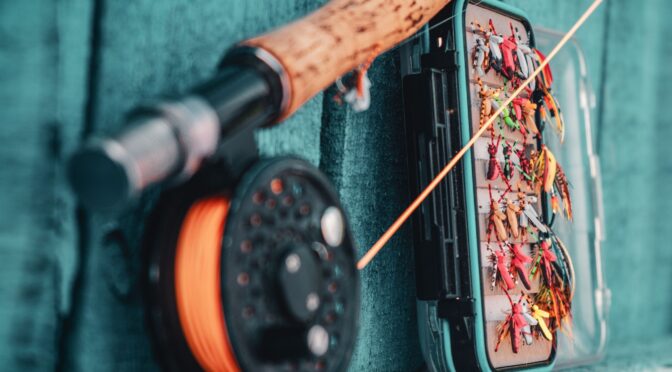If you love to fly fish but get your flies from a fly fishing outfitter, you should consider making your flies yourself! In our guide, we’ll explain why you should start tying and get you started with the equipment you need to tie your own flies.
Why You Should Tie Your Own Flies
What’s the benefit of making your own flies in the first place? Well, if you ask any angler who ties their own flies, they’ll tell you that it may be a hassle at first, but the reward is definitely worth the effort.
Making your own flies allows for customization, so you can experiment and tinker to find the ideal fly for your favorite fishing spot. Once you catch fish using a fly crafted with your two hands, the satisfaction is double what you’d feel with a store-bought fly!
Pro Tip: Tying your own flies also saves you money long-term over buying new flies from fly fishing outfitters.
Essential Fly-Tying Equipment:
Ready to get tying? First, there’s some equipment you’ll need to start tying your own flies!
Vise
The first and most essential tool for your fly-tying hobby is a vise. The vise holds the hook of your fly in place while you’re tying and constructing it—you can’t make your own fly without one!
Your first decision will be to choose between a rotary and stationary vise. Both vises have their advantages, so it’ll come down to your individual preferences.
Bobbins
A bobbin supports the thread while the angler wraps the fly and gives them better aim and control of the line. Some intricate and high-quality (and high-priced) bobbins are available for experienced fly-tyers. For a beginner, it’s best to go with a simple and minimalist bobbin.
Thread
Speaking of thread, you won’t be able to make a fly without some! Anglers use many thread types, so you’ll want an assortment of sizes, colors, and strengths for your new fly-tying workshop.
Hackle Pliers
Flies often feature feathers or some other long, delicate material to attract fish. These airy and light materials can be difficult to secure with bare hands, which is where hackle pliers come in!
After creating a few flies for yourself, you may be able to make one without using hackle pliers—but for beginners, we recommend using pliers.
Whip Finisher
A fly isn’t finished until it’s neatly wrapped and the thread is tied. The final knot of a fly is difficult, especially for those new to fly-tying. This is where the whip finisher comes in hand.
A whip finisher keeps the thread and materials in place while tying, making the finishing knot and step of fly-tying a breeze for even new fly-tyers.
Texas Outdoors
Latest posts by Texas Outdoors (see all)
- The Best Ideas for Storing an Outboard Motor – July 9, 2024
- Safety Tips for UTV Off-Roading in Icy Conditions – July 9, 2024
- How To Take Care of Your Golf Cart in the Summer – July 2, 2024

Leave a Reply